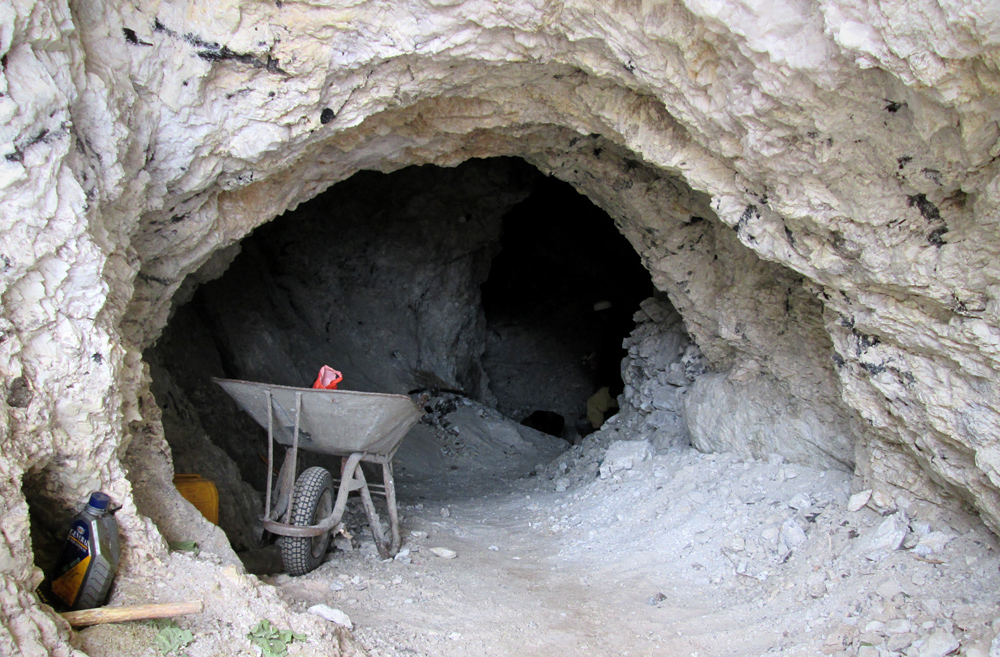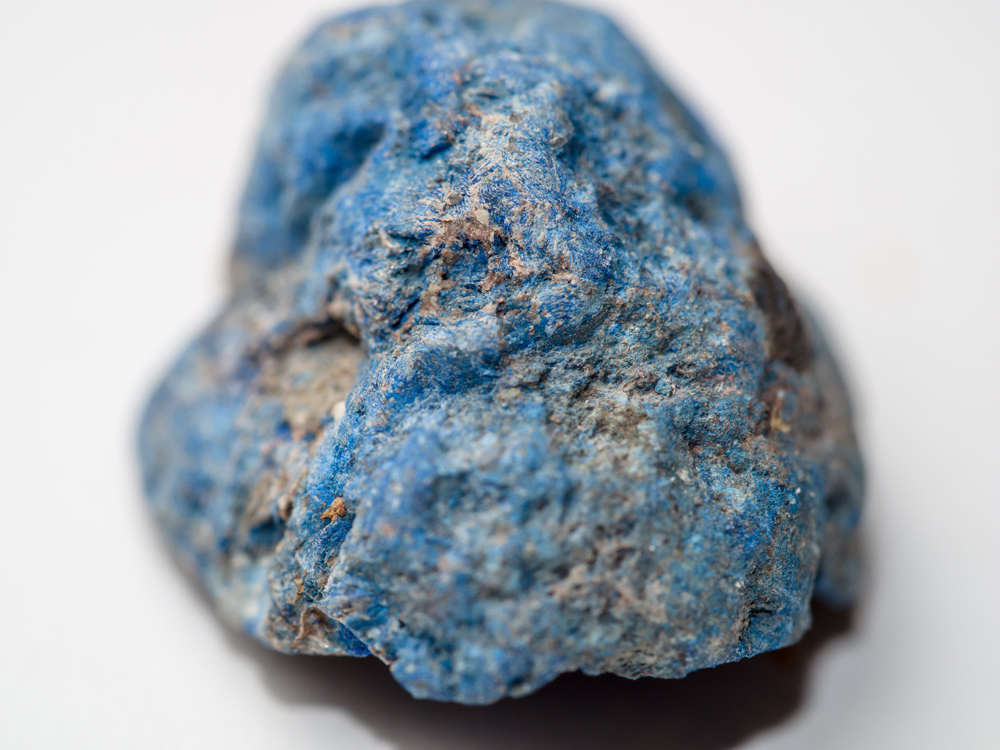-
How Lapis Lazuli Turned One Afghan Mining District to the Taliban
August 25, 2016 By Adrienne BoberIn the mountains of northern Afghanistan, between Pakistan and China, a region that has historically rejected the Taliban has become the group’s second-largest source of revenue. The twisting tale of Kuran wa Munjan reveals the challenges of extracting precious minerals in unstable and fragile states.
Afghanistan is home to mineral reserves that could be worth over $900 billion, according to a U.S. Geological Survey report published in 2012 in conjunction with the Pentagon. But even as the report sparked excitement over a possible source of revenue for economic development, many experts urged caution, pointing out the difficulties in extraction and export, rampant corruption, and insecurity. These fears seem to have borne out in several regions, but perhaps most strikingly in the province of Badakhshan.
Two years of investigation in the district of Kuran wa Munjan by the London-based non-profit Global Witness has resulted in coverage by The New York Times and BBC connecting lapis lazuli, a semi-precious, primarily decorative stone, to Islamic extremism. Government failures, competing strongmen, and complacency have created a new conflict mineral, fortifying the Taliban, jeopardizing development, and demonstrating corruption’s iron grip on Afghanistan.
Mining in tourmaline and lapis lazuli is extremely profitable throughout Badakhshan, which is known for its mineral endowment. But one mine is a key contributor to insecurity. A local elder, Haji Bashir, described it as a participant in recent conflicts: “This mine is itself a general… It will make people fight,” he told Global Witness.
“The revenue going to these strongmen and the Taliban from just one small area of Badakhshan rivals the government’s declared income from the entire Afghan natural resources sector,” writes Global Witness.
Between a Rock and a Hard Place
Mineral resources in Afghanistan belong to the government and the rights to extract them are awarded through an auction. In 2013, the Afghanistan-based Lajwardeen Mining Company won a contract to extract lapis lazuli in Kuran wa Munjan for 15 years, reports the BBC’s Justin Rowlatt. But despite the award from Kabul, the local government and people did not recognize the company’s authority.
“This mine is itself a general… It will make people fight”Zalmai Mujadidi* is one local leader who has made the handoff difficult, according to reporting by Mujib Mashal in The New York Times. Mujadidi operated the mine in the 2000s and was elected to Afghanistan’s parliament in 2005 with the support of President Hamid Karzai, according to Global Witness. After taking office, he consolidated power over government forces, even appointing his brother head of the Mining Protection Force, the provincial police associated with the national Ministry of Mining.
Mujadidi nonetheless had to share power with Abdul Malek, the district chief of police and former commander of an anti-Taliban, NATO-backed force that has held Badakhshan since the uprising against the Soviets. At first Mujadidi and Malek coexisted peacefully, sharing mining revenue, but as Mujadidi expanded his control, the partnership floundered. Karzai intended that Mujadidi serve as a liaison between the national government and a resource-rich province, Global Witness surmises, but instead he made himself rich. After a violent coup attempt in 2012 – that appears to have been unconnected to the chief of police – Mujadidi had Malek transferred elsewhere in the province.
Lajwardeen Mining Company had, in the meantime, found its attempts to enter its mine impeded by Mujadidi’s forces. In order to extract some value from the investment, it began working with Mujadidi. “Company officials acknowledged that they had enlisted the support of powerful people like [Mujadidi],” writes Mashal. “Such was the reality of doing business in Badakhshan.”
The partnership angered locals, who had grown tired of seeing benefits taken by outsiders. Looking to capitalize on this discontent, Malek resigned his new post in the Khash district and returned to Kuran wa Munjan. In January 2014, according to several sources cited by Mashal and Global Witness, locals rallied around Malek after being warned of an impending Taliban attack, and with this support Malek’s forces successfully evicted Lajwardeen and Mujadidi’s district police forces. A local elder explained to Global Witness that most “people were excluded from their rights to the mine…the majority of people supported [the coup].”
“They choose the Taliban for their revenge”With Lajwardeen ousted entirely, and Malek and Mujadidi distracted by fighting among themselves, the Taliban saw an opportunity. Mashal cites two prominent figures, including the district governor at the time, who were adamant that when Malek first arrived there was no actual threat from the Taliban and that he crafted the rumor as a pretense. Kuran wa Munjan had successfully resisted the group’s advances in the 1990s and early 2000s in campaigns Malek himself was involved in. But since the rivalry between Malek and Mujadidi came to a head, the Taliban have been encroaching, never launching a direct attack on the mine, but always applying pressure in the background. They exploited the same local sentiments that made Malek’s takeover possible, especially after he failed to deliver meaningful change. The “struggle is one of resources, not ideology: a ‘business war,’” writes Global Witness. People are tired of mismanagement, including by the government, so “they choose the Taliban…for their revenge,” a local miner told Global Witness.
Malek, still in control of the mine, is now forced to make payoffs to maintain a fragile grip on power. “Payments to the Taliban reportedly amount to at least 50 percent of the revenue from the mines,” according to the Global Witness report, and lapis lazuli is thought to be the group’s second largest source of revenue in the country. The Afghan government has lost an estimated $100 million from the illegal exploitation of lapis resources since 2001, and the overall profits to armed groups from lapis in 2014 amounted to $20 million.
An Islamic State Connection?
Hamid Karzai’s successor, President Ashraf Ghani, has acknowledged the difficulties in developing Afghanistan’s extractive sectors and governing by the rule of law. “We are at risk of the curse of plenty, [the] curse of resources,” he said at an anti-corruption conference held by the European Union in May. But so far, he does not appear to have deviated far from the status quo.
In a letter secured by Global Witness from Lajwardeen, the company informed the Ministry of Mines in January 2014 that Kuran wa Munjan had been attacked by the Taliban and the company could not fulfill its contract because of the occupation. Shortly after, the National Security Council, led by Ghani, cancelled the contract and began preparing to re-auction mining rights, citing the company’s inability to fulfill their agreement and prevent armed forces from taking over, according to The New York Times. The council also blocked traditional shipping routes used by Lajwardeen and proposed bringing Malek’s militia forces into the government fold, says Global Witness. As Mashal writes, “Such a change would set a strange precedent: failing to protect a contractor from a seizure of assets and then legalizing the takeover.”
Overall profits to armed groups from lapis amounted to $20 million in 2014How can Afghanistan extricate itself from such a quagmire? Global Witness recommends a laundry list of reforms that may be optimistic in the face of such entrenched graft: creating benefits for communities from legal mining revenues and community monitoring systems; increasing contract and payment transparency for private companies and public organizations; closing illegal trade routes; and replacing officials with ties to armed groups or who were questionably appointed.
The report also suggests that countries importing materials from Afghanistan, like China, ensure “supply chain due diligence,” and avoid minerals like lapis lazuli that contribute to conflict. It also urges international partners to make extractive governance a priority when working with the Afghan government.
Disturbingly, the Global Witness investigation finds hints of more conflict to come. Those interviewed described an increasing number of foreign fighters in Kuran wa Munjan, including some associated with groups loyal to the Islamic State. Citing a statement from an Islamic State commander and diplomatic sources, the authors say the mine is a “strategic priority” for the organization.
“What the lapis mines of Badakhshan show better than almost any other example is that they are going to be a source of conflict and corruption and actually possibly fuel a long-term, chronic resource-based conflict,” Stephen Carter, head of Global Witness’s Afghanistan campaign, told The New York Times. “So what should be a treasure is actually a poison for Afghanistan.”
*Transliteration from Farsi varies between Majadidi and Mujadidi, and Malik and Malek. Transliterations have been adjusted for consistency throughout the article.
Correction, August 25, 2016: An earlier version of the text referred to Kuran wa Munjan, the town; it is both a district and a town, but the Global Witness Investigation covered the district.
Sources: The BBC, Global Witness, Joint Force Quarterly, The Nation, The New York Times, Office of the President (Islamic Republic of Afghanistan).
Photo Credit: A tourmaline mine in Badakhshan, used with permission courtesy of Global Witness; Lapis lazuli detail, courtesy of flickr user James Petts.
 A Publication of the Stimson Center.
A Publication of the Stimson Center.





